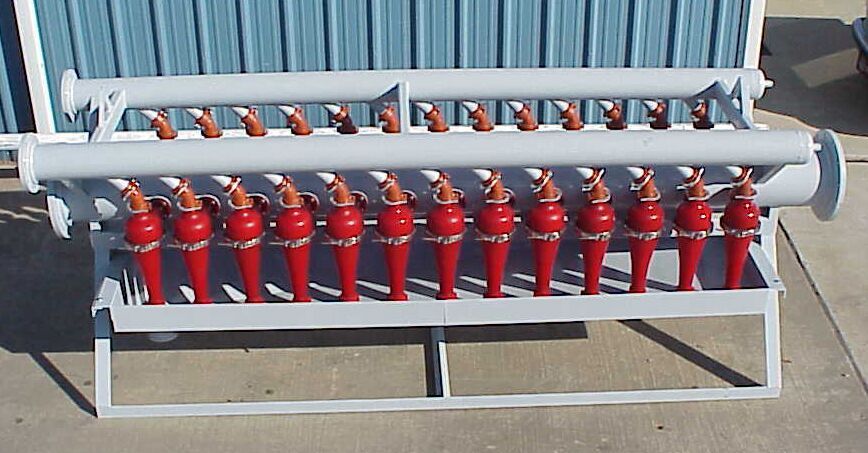A hydrocyclone is a static separation device that uses centripetal force to separate particles, liquids of different densities, or gas bubbles from water into two flowstreams: (1) an underflow stream comprised of a dense or coarse solids fraction, and (2) a water overflow stream with a light or fine fraction.
Large or dense particles in water are fed tangentially to ahydrocyclone to produce two streams: (1) a relatively small volume of concentrated solids spirals down the hydrocyclone’s wall to exit as the underflowstream, and (2) a relatively large volume of water containing smaller or lighter particles or liquid or gas spirals up the centre of the hydrocyclone to exit in the overflow.
Hydrocyclones have no moving parts and thus provide inexpensive separation of large volumes of water containing low concentrations of particulate solids. The only operating cost is for increased pumping power needed to overcome the 30 psi pressure drop across the hydrocyclone.Solid/liquid hydrocyclones have many industrial applications. For wastewater treatment, they are used to separate sand, silt, and clay from water.


